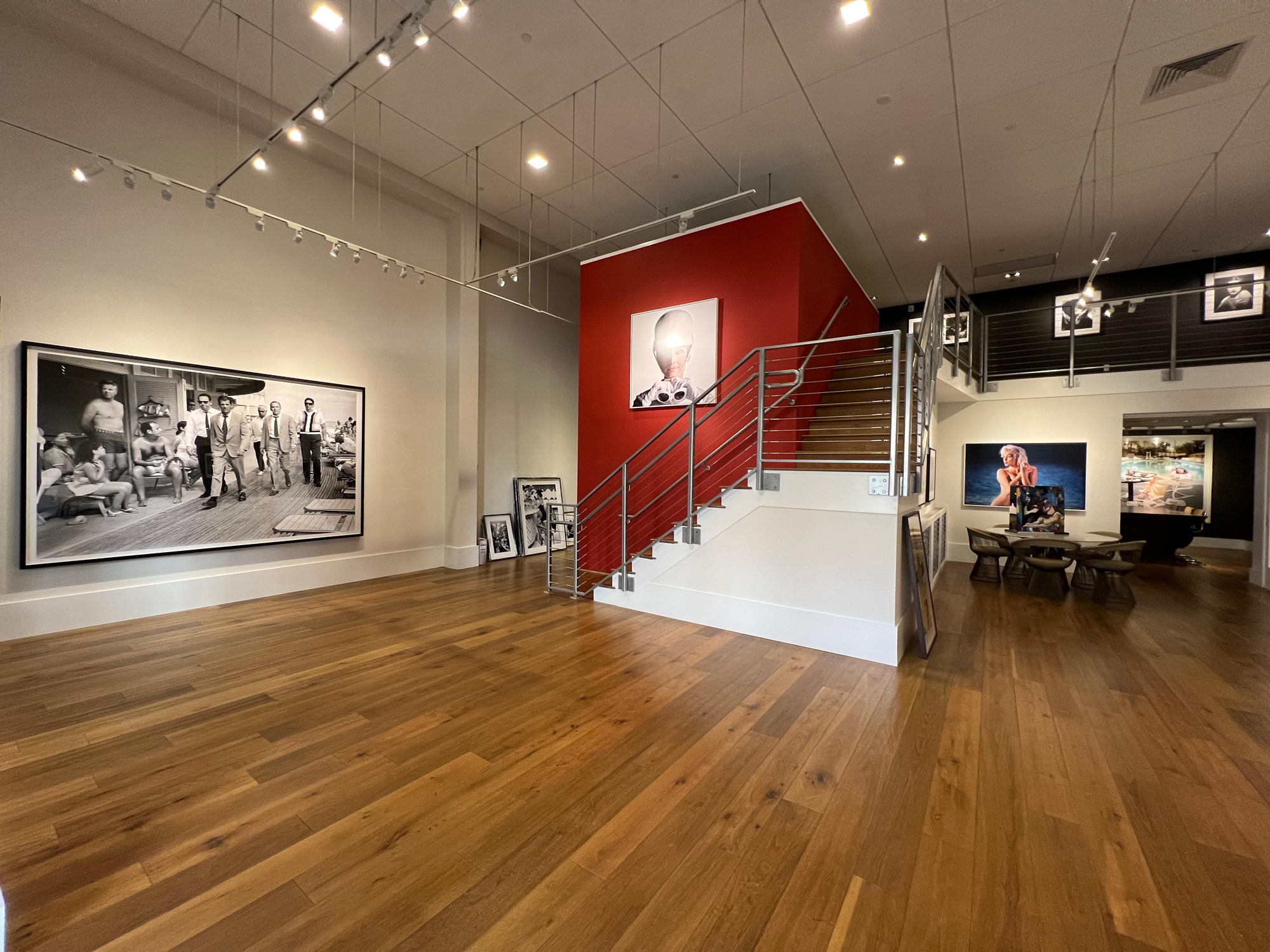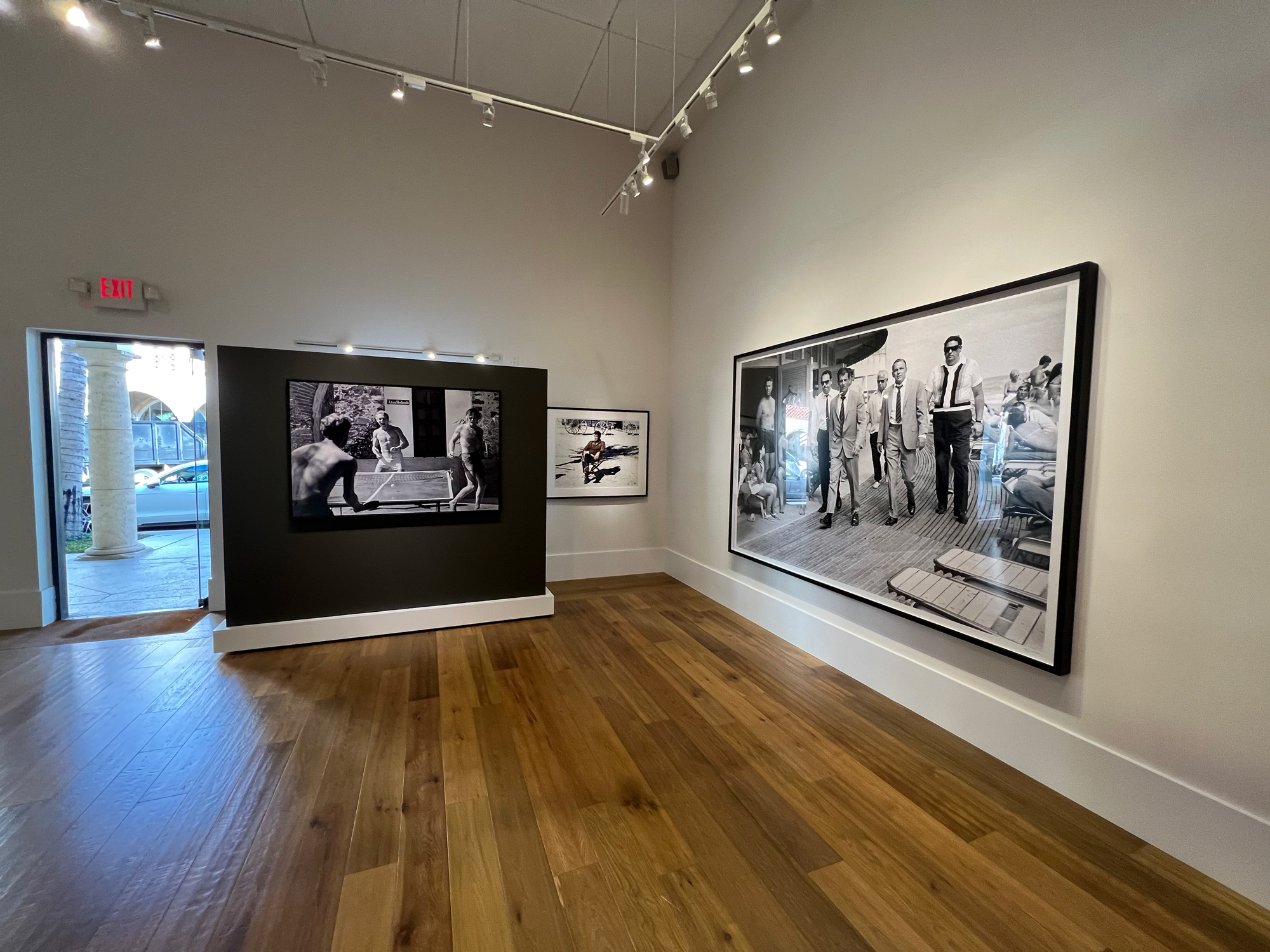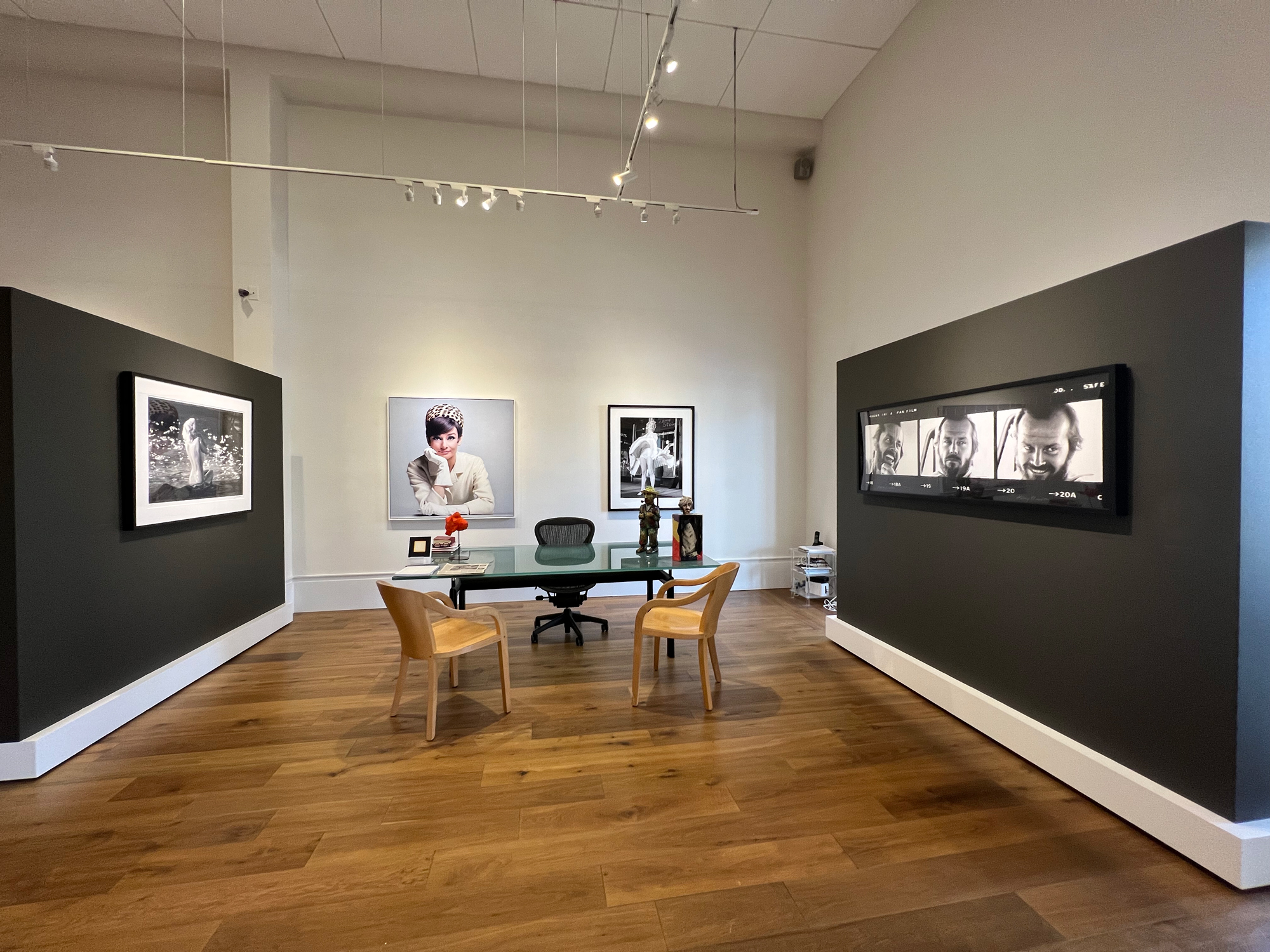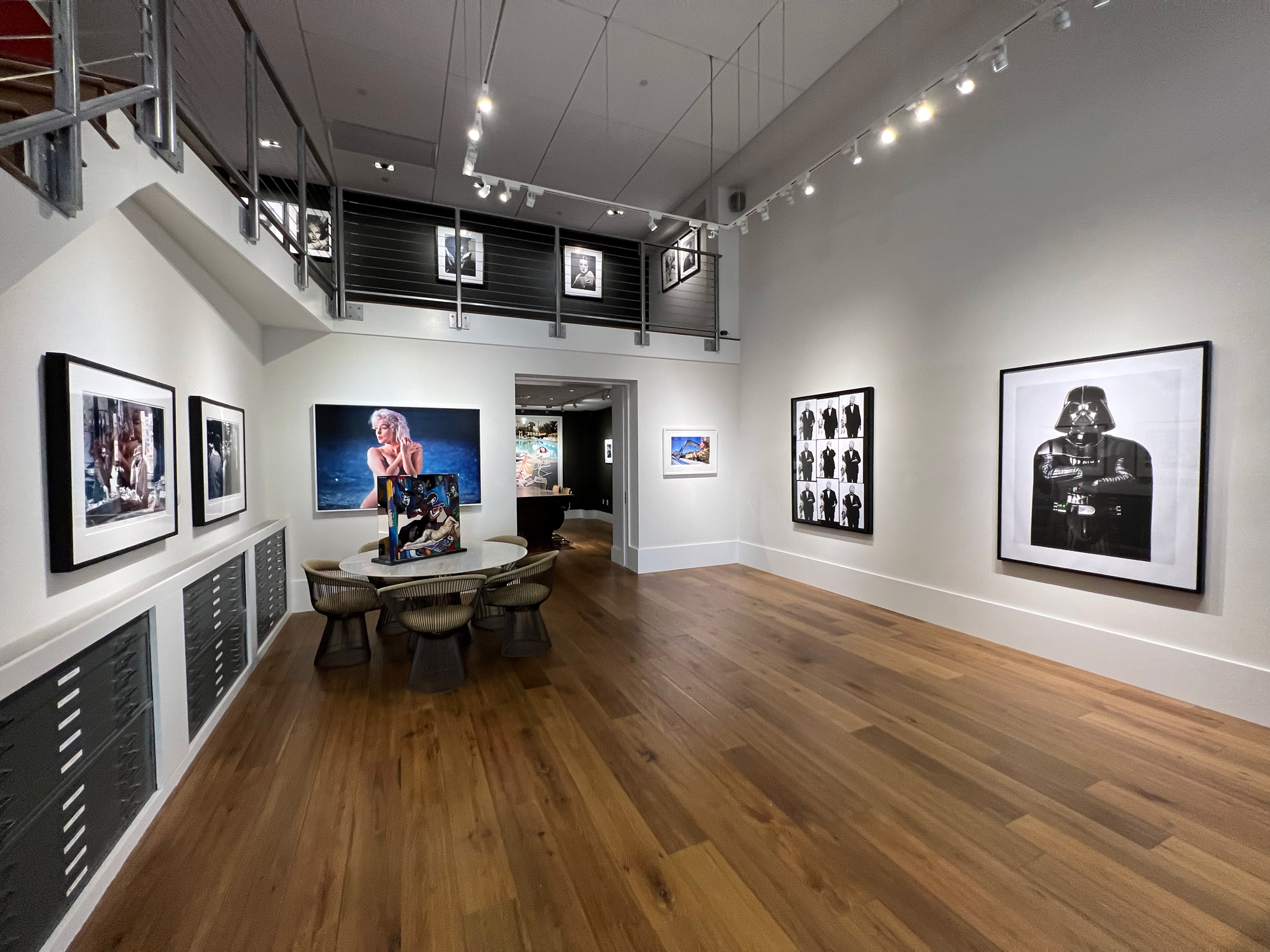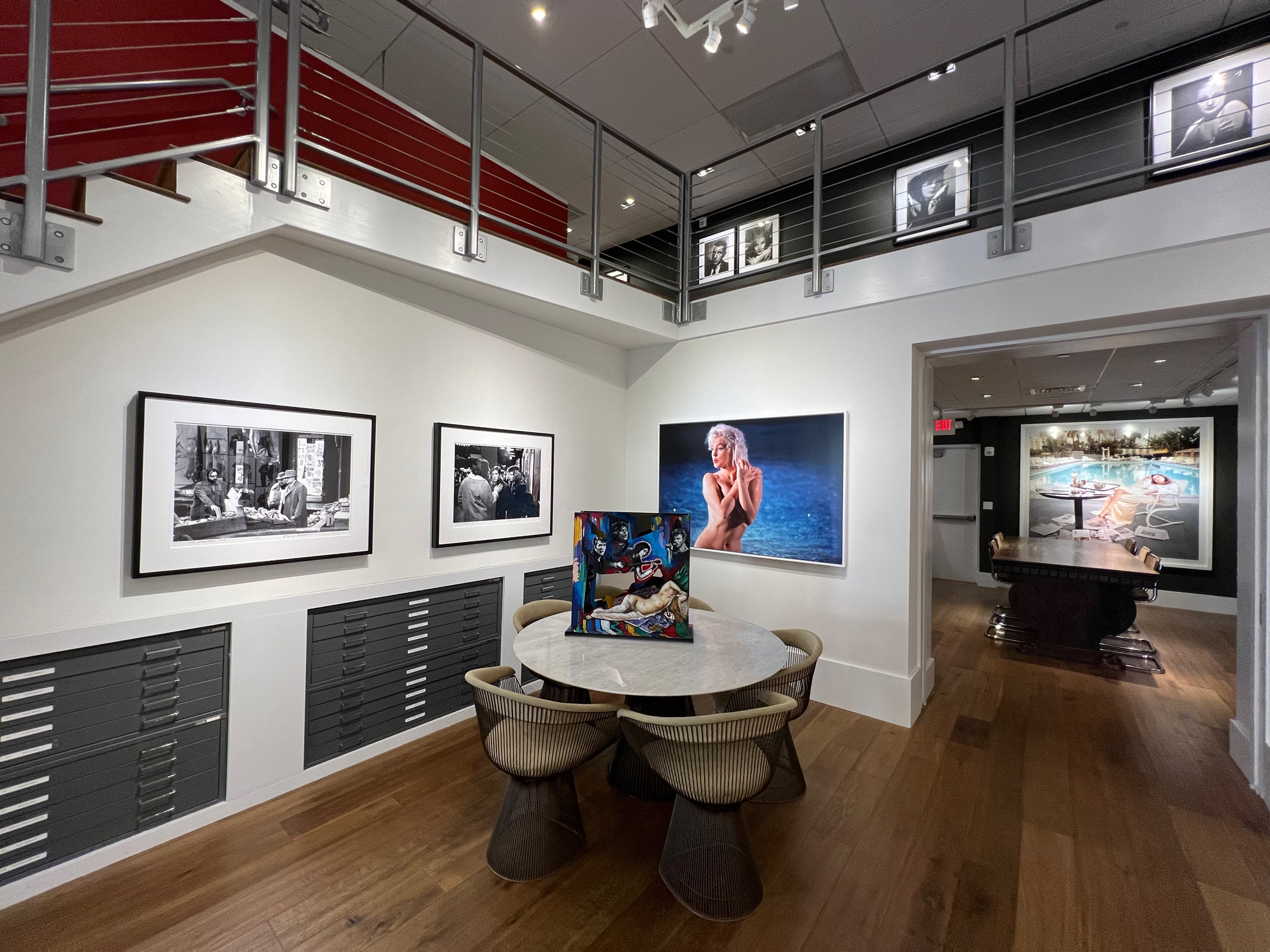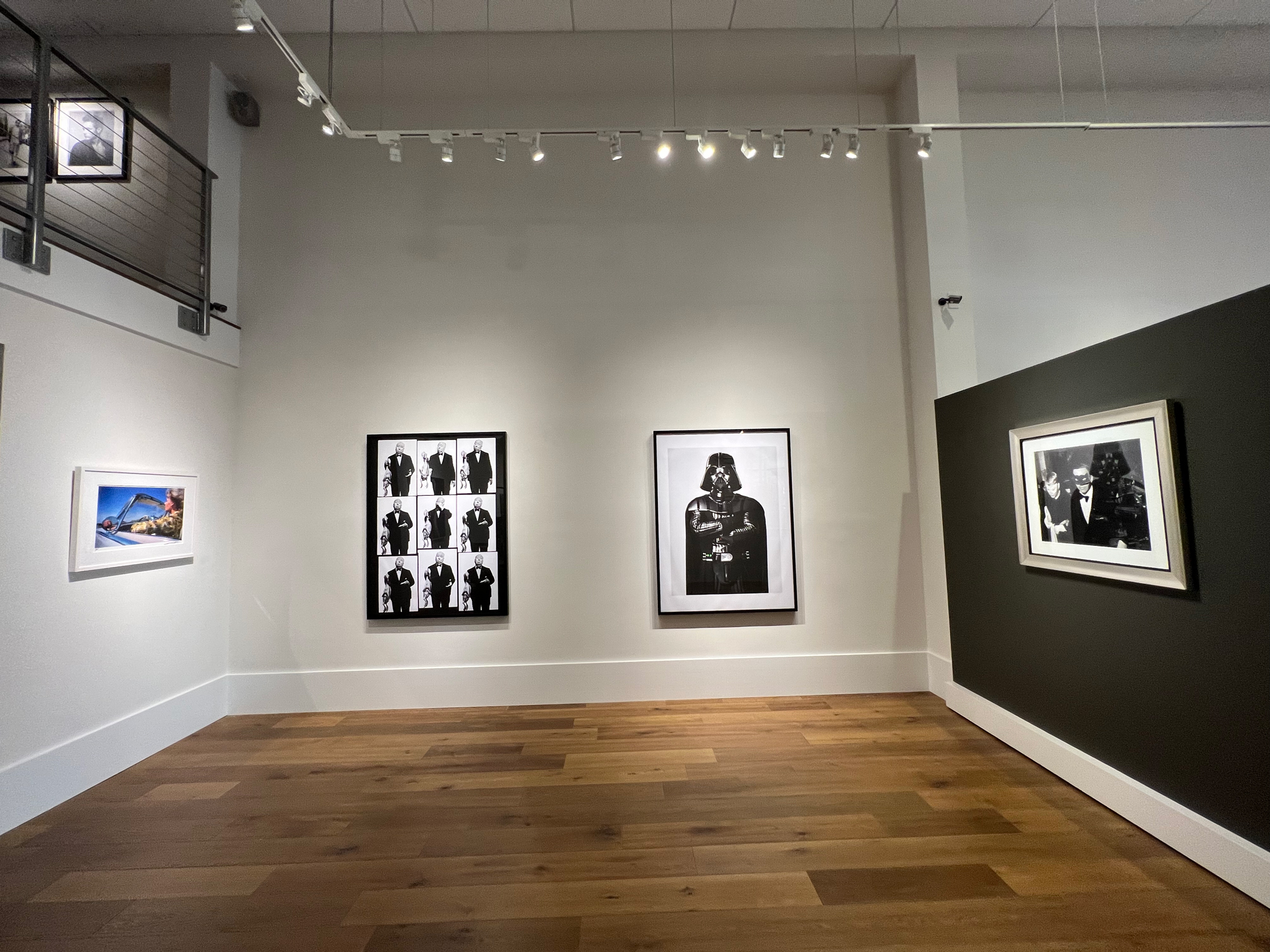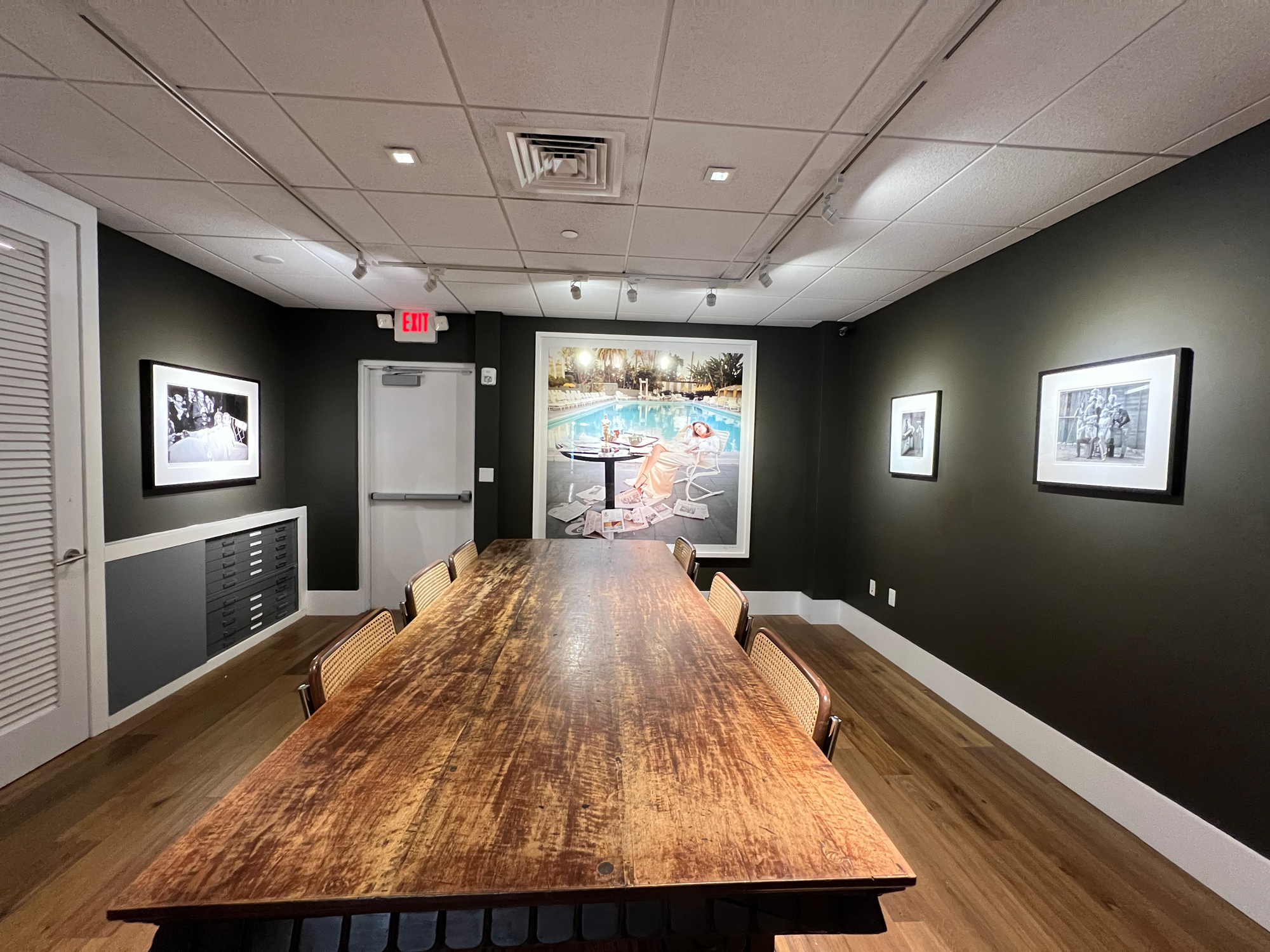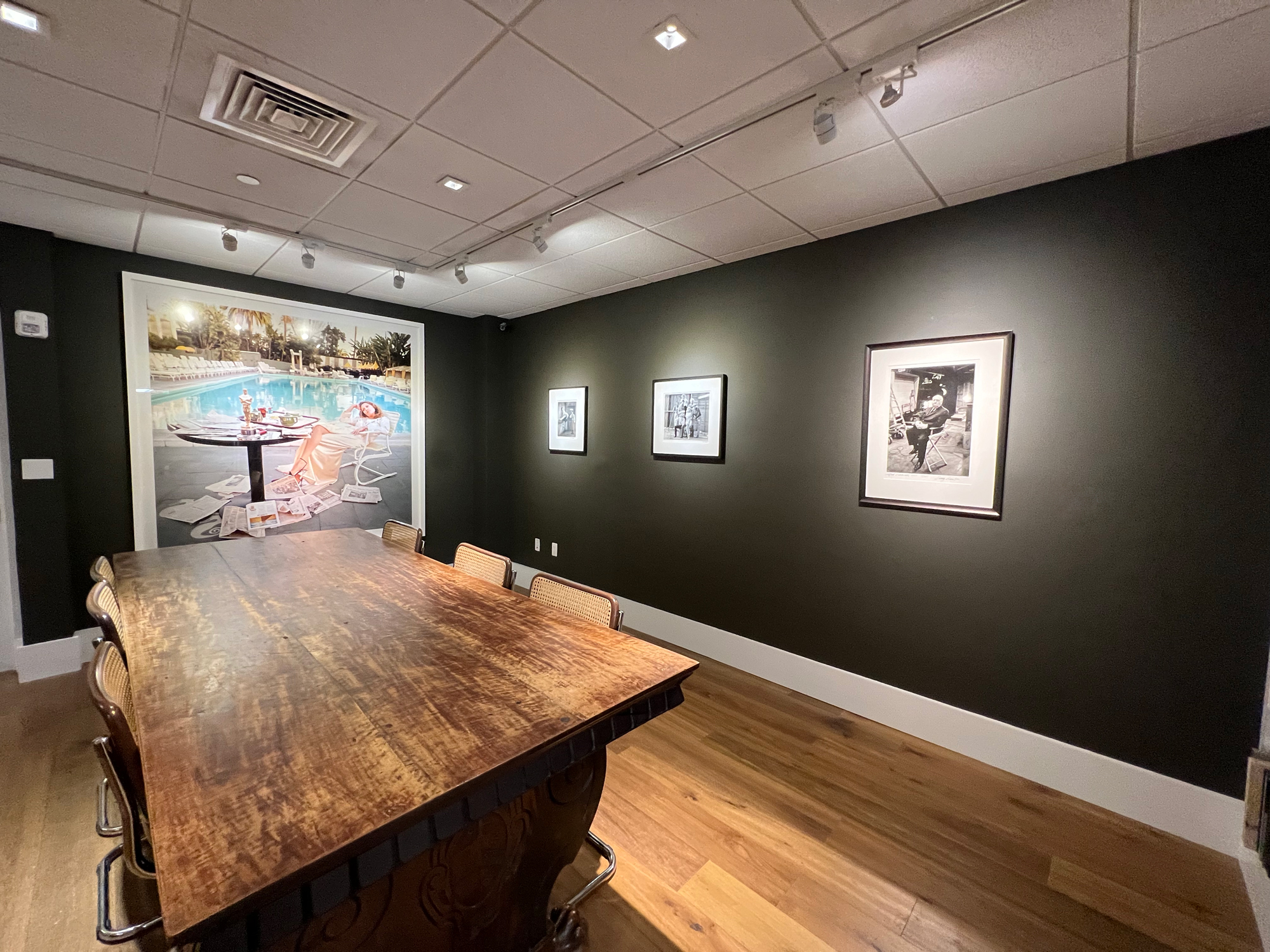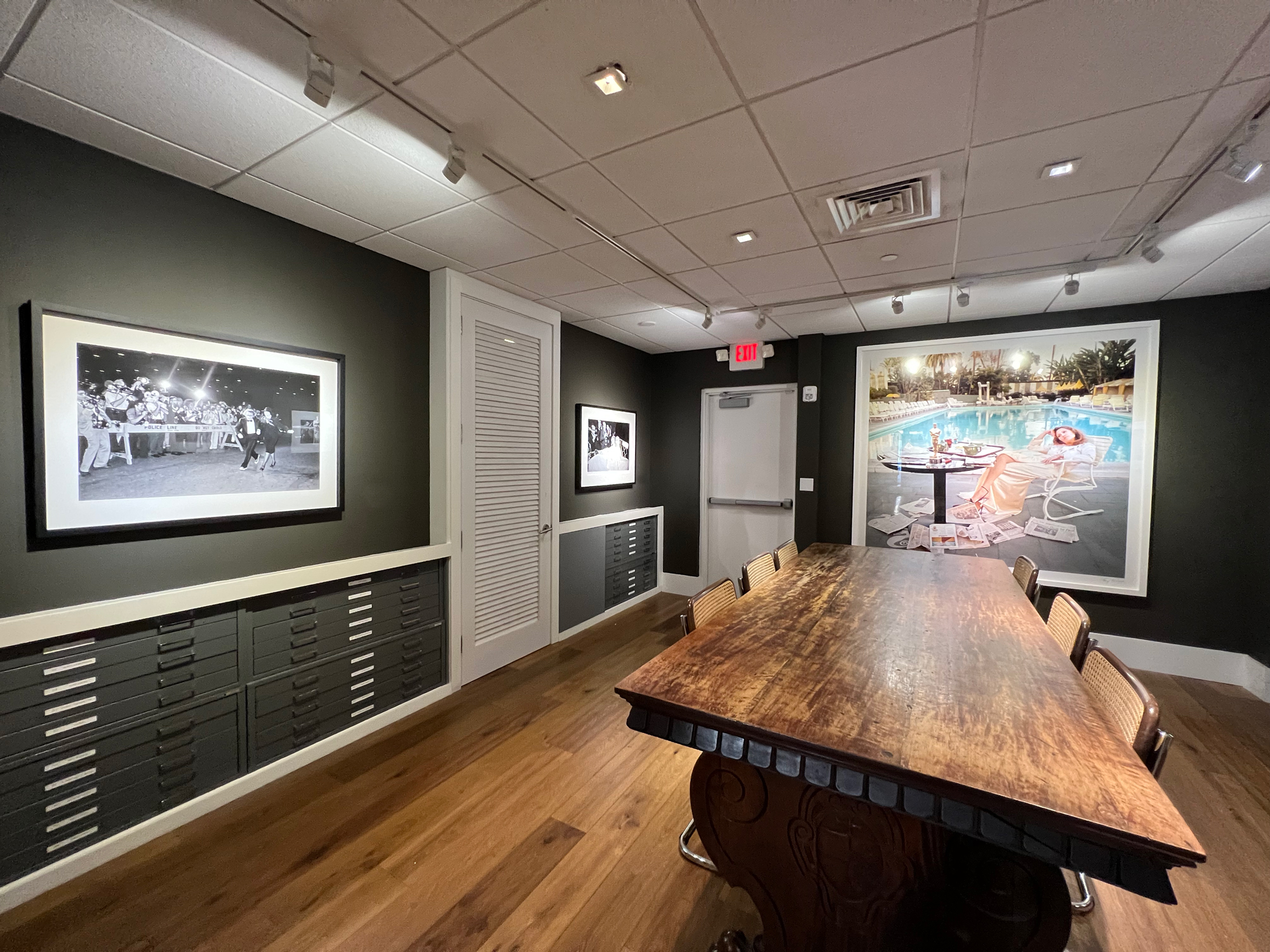DECEMBER 18 – JANUARY 15, 2022
The exhibition “Movie Made America” arises from the intersection between the still and the moving image. In America, cinema and Hollywood have been part of the dream-making and entertainment industry. Film stills, posters, and photography created as publicity images have been an area where the art services industry. After World War II, the production of American-made motion pictures – particularly those in Hollywood, led the world – both in the volume of production as well as their near-universal appeal. They were significant cultural and commercial exports. Many cinematographers and directors were from European extraction and migrated to the United States during or before the War. The same can be said about some of the photographers featured in this exhibition.
-

Harry Benson
Sean Connery as James Bond in 1965’s Thunderball (in bed with Luciana Paluzzi) Read more -

Harry Benson
Jack Nicholson Times 3 Add to cart -

Harry Benson
Godfather Pacino, NYC Add to cart -

Harry Benson
Godfather Brando, NYC Add to cart -

Harry Benson
Frank Sinatra and Mia Farrow at Truman Capote’s Black and White Ball Add to cart -

Harry Benson
Dean Martin on set “Bandolero” Read more
-

Lawrence Schiller
Sophia Loren & Carlo Ponti Add to cart -

Lawrence Schiller
Paul Newman and Robert Redford (Ping Pong) Add to cart -

Lawrence Schiller
Paul Newman and Robert Redford Add to cart -

Lawrence Schiller
Paul Newman Add to cart -

Lawrence Schiller
Marilyn Monroe Add to cart -

Lawrence Schiller
Clint Eastwood Add to cart -

Lawrence Schiller
Buster Keaton, MGM Back Lot Add to cart -

Lawrence Schiller
Alfred Hitchcock and Tippi Hedren Add to cart
-

Terry O'Neill
Roger Moore Add to cart -

Terry O'Neill
Frank Sinatra, Miami Boardwalk (Fontainebleau) Add to cart -
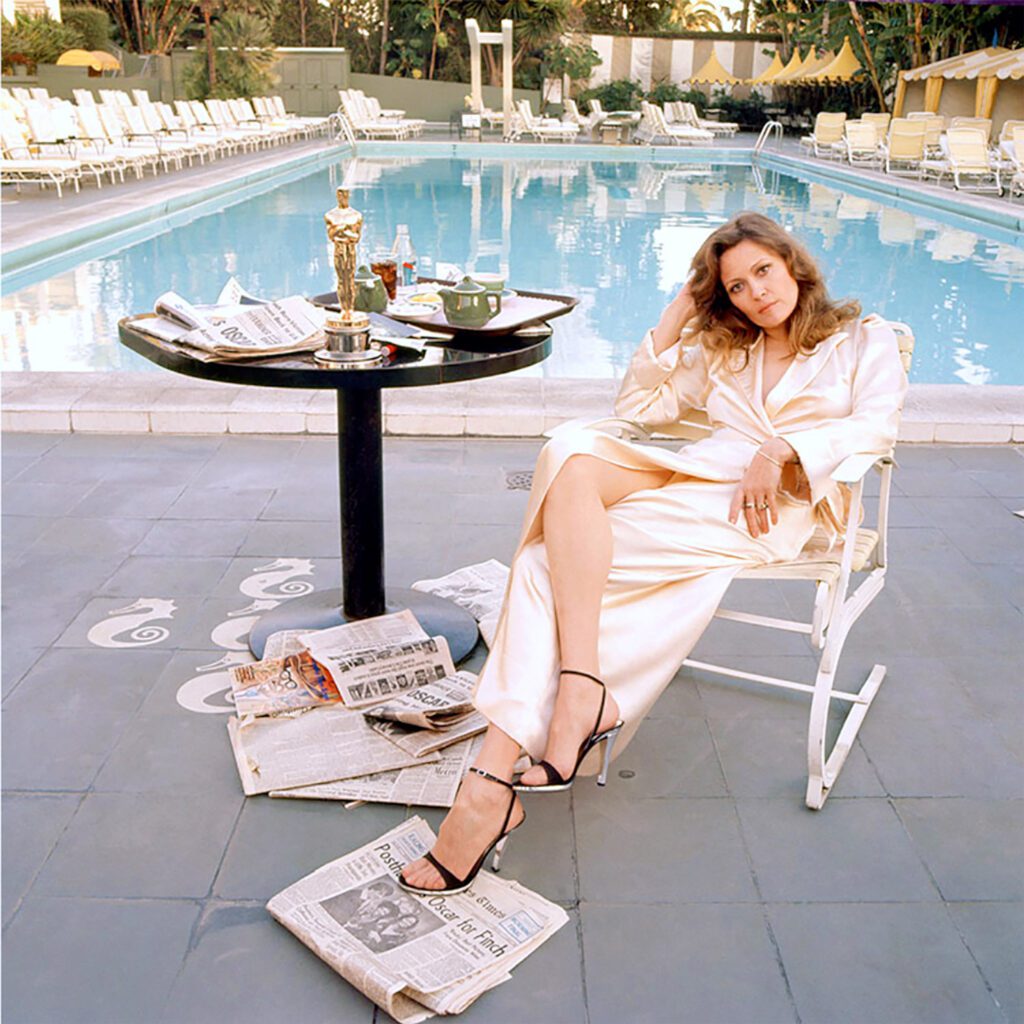
Terry O'Neill
Faye Dunaway, The Morning After, outtake Add to cart -

Terry O'Neill
Brigitte Bardot Add to cart -

Terry O'Neill
Audrey Hepburn in Pool, On the set of ‘Two for the Road’ Add to cart
The exhibition “Movie Made America” arises from the intersection between the still and the moving image. In America, cinema and Hollywood have been part of the dream-making and entertainment industry. Film stills, posters, and photography created as publicity images have been an area where the art services industry. After World War II, the production of American-made motion pictures – particularly those in Hollywood, led the world – both in the volume of production as well as their near-universal appeal. They were significant cultural and commercial exports. Many cinematographers and directors were from European extraction and migrated to the United States during or before the War. The same can be said about some of the photographers featured in this exhibition.
The film industry’s success in America has often been based on a combination of star power, a compelling narrative, and strong visual construction. Photography’s basis as an art form that presents single images (appearing frozen in time) keeps the viewer engaged. Harry Benson, Albert Watson, George Hurrell, Horst P. Horst, Douglas Kirkland, Terry O’Neill, and Lawrence Schiller have all developed markets as leading portrait photographers of their day. Part of their work has been devoted to taking pictures of stars associated with Hollywood or the world of cinema. Whether by looking at the glamour portraits of the silver screen idols that George Hurrell made legendary through dramatic lighting to the more rapidly composed pictures of Lawrence Schiller or Harry Benson, the power of their images often speak to a larger audience.
The strength of the photographs of legendary actors and actresses that these masters of photography created have a more profound purpose than documentation. The images in this exhibition draw their allure from tagging our collective memories and imaginations to breathe life into the still image.
By viewing the iconic portraits of Audrey Hepburn, Marilyn Monroe, Paul Newman, Roger Moore, or any number of great screen giants, we are transported back in time. It isn’t the person themselves that we respond to, but their persona, which has been established by an accumulation of the parts they play. The relationship between cinema and the still image is additive. One medium doesn’t have as much power or impact without the other. A compelling photograph from this show is memorable because it directly plays into the aura or larger-than-life projection of the individual. The lasting presence of the picture transcends time and the instant of looking and encourages a trip to the fantasy created on the silver screen.
In this sense, both cinema and the portraiture of significant personalities become cultural manifestations. In our attempt to ‘escape to the movies,’ we endorse a code of behavior and establish preferences for actors and actresses that we feel are transformative. Their appearance, actions, and characteristics embody cultural ideas. As those ideas change through time – and as society itself is a product of a larger world, our preferred choice of movie stars changes. Thus the early pictures of Horst or Hurrell with their static, dramatic, and classically framed poses give way to a more serendipitous organization of space in the work of Watson or Kirkland. As stereotypes in hero and heroine based Hollywood films – with clearly demarked ‘good and bad’ extremes have given way to more ambiguous social norms and behaviors. Photographers have had to find new and more subtle ways to free themselves from creating ‘cardboard’ characters to broaden their inner dimensions and suggest vulnerabilities.
In the end – creativity means breaking molds and finding new ways to engage with an audience in an age where we consume photographs in record numbers. “Movie Made America” is a sampling of captivating photographs that preserve not just celebrities but the ideologies that have embraced the spirit of their time.























